Dear Readers, SBI Clerk (Junior Associates) 2018 Preliminary Examination is scheduled to be held on 23rd, 24th, and 30th of June 2018. In that case, aspirants need to speed up the preparation as there are only few days more.
To boost up your exam preparation, Our IBPS Guide team is providing a full length Sectional Tests for English, Quantitative Aptitude and Reasoning with detailed solutions to score more marks in the prelims exam. Make use of this opportunity and recommend to your friends to achieve a successful career in Banking.
You can also practice using our SBI Clerk Test Series pack prepared by our experienced professionals as per the latest exam pattern. We wish you a great success in all forthcoming exams. Click Here for SBI Clerk Practice Mock Test
Minimum Cut Off for this Quantitative Aptitude Section Test is: 23
[WpProQuiz 2618]
Click “Start Quiz” to attend these Questions and view Solutions
Direction (1-5): Read the following information carefully and answer the question give below.
Ten people A, B, C, D, E, F, G , H, I and J sitting in a linear row all facing north but not necessary to be in the same order.
A sits second to the left of I. Only three people sits between D and C, either one of them is an immediate neighbour of A. Only three people sits between J and C, who does not sits at extreme end of the line. B sits at extreme end of the row. Only one person sits between B and A. F sits second to the right of D. Only two people sits between G and J, who is neither an immediate neighbour C nor D. J is not an immediate neighbour of A. E sits immediate left of H.
1). Who sits second to the right of I?
a). A
b). J
c). H
d). G
e). None of these
2).If all the people are made to sit in alphabetical order from left to right, then how many of them will remains in their original position?
a). One
b). Two
c). Three
d). More than Three
e). None
3). Who among the following persons sits third to the left of I?
a). A
b). J
c). D
d). G
e). None of these
4). How many people sits to the right of G as per the given information?
a). One
b). Two
c). Three
d). More than three
e). None
5). If B is related to F, G is related to J in a certain way based on their arrangement. Then, who among the following people is related to C?
a). D
b). I
c). A
d). J
e). None of these
Direction (6-10): Read the following information carefully and answer the question give below.
“report card mark sheet” is coded as “mnk wod qaw owe”
“improve mark response code” is coded as “wod wes yig sxa”
“ignore card score revenue” is coded as “ewq qaw axc trz”
“improve report score more” is coded as “sxa mnk axc tea”
6). What is the code for the word “more”?
a). sxa
b). mnk
c). tea
d). axc
e). None of these
7). What is the code for the word “code”?
a). yig
b). wod
c). wes
d). Cannot be determined
e). None of these
8). What is the code for the word “sheet”?
a). qaw
b). owe
c). mnk
d). wod
e). None of these
9). What is the code for the word “revenue”?
a). trz
b).ewq
c). qaw
d). Either a or b
e). None of these
10). What is the code for the word “report mark card”?
a). wes wod mnk
b). trz wes axc
c). mnk wod qaw
d). Cannot be determined
e). None of these
Direction (11-15): Read the following information carefully and answer the question give below.
Eight people Sita, Nakula, Lakshmana, Arjuna, Sagadeva, Rama, Bema and Dharma are living in a eight storey building. They all earn different amount of salary (in Rs.) viz., 6000, 10000, 12000, 15000, 18000, 25000, 29000 and 34000. The lowermost floor of the building is numbered one, above the floor is numbered two and so on till the topmost floor is numbered eight. All the given information is not necessary in the same order.
The person who earns highest amount of salary is living in floor number 2. Nakula lives in floor number Six. Sita earns Rs.25000. The persons who live above Bema earn less than Bema, who does not live in floor number 2. The difference between the salaries of Nakula and the person who lives in floor number 4 is 19000. Nakula earns less than the person who lives in floor number 4. Only two people lives between Dharma and Sagadeva. The person who lives immediately below Nakula earns 150% more than Nakula. Rama does not live any of the floors below Sita. Sagadeva does not earn second highest amount of salary. Bhema earns more than Lakshmana. The difference between the salaries of the person who lives in floor number 1 and Lakshmana is equal to Rama’s salary.
11). Who earns highest amount of salary?
a). Rama
b). Sita
c). Lakshmana
d). Arjuna
e). None of these
12). How much does Nakula earn?
a). Rs.6000
b). Rs.10000
c). Rs.15000
d). Cannot be determined
e). None of these
13). What is the salary of the person who lives in floor number 7?
a). Rs.10000
b). Rs.12000
c). Rs.6000
d). Rs.15000
e). None of these
14). On which floor does Dharma lives?
a). Floor number 4
b). Floor number 6
c). Floor number 5
d). Floor number 8
e). None of these
15). How many people lives between the person who earns Rs.18000 and Bema?
a). One
b). Two
c). Three
d). More than three
e). None
Direction (16-20): Read all the conclusions and then decides which of the given conclusions logically follows from the given statements disregarding commonly known facts.
Given Answers;
a). Only Conclusion I follows
b). Only Conclusion II follows
c). Either Conclusion I or Conclusion II follows
d). Neither Conclusion I nor Conclusion II follows
e). Both Conclusion I and Conclusion II follows
16).
Statements:
Some Blue are Green
No Green are Black
All Black are Brown
Conclusions:
I). All Blue being Brown is a possibility
II). Some Green being Brown is a possibility
17).
Statements:
No Apple are Cherry
All Cherry are Banana
No Banana are Guava.
Conclusions:
I). All Cherry being Guava is a possibility
II). Some Apple being Banana is a possibility
18).
Statements:
All Water are Juice
Some Juice are Nuts
All Nuts are Dates
Conclusions:
I). Some Dates are Water
II). Some Juice are Dates
19).
Statements:
All Wipro are Infosys
No Infosys is TCS
No TCS is CTS
Conclusions:
I). No Wipro is TCS
II). Some CTS are not TCS
20).
Statements:
All Bottles are Plates
Some Plates are Cups
No Cups are Saucers
Conclusions:
I). Some Plates are Saucers
II). No Plates are Saucers
Direction (21-25): Read the following information carefully and answer the question give below.
Seven people P, Q, R, S, T, U and V are all taking seminar on seven different subjects namely Physics, Chemistry, Biology, History, Geography, Maths and English in a week. The week days starts from Sunday to Saturday. All the given information is not necessary in the same order.
The seminar on Geography is held in Thursday. P is taking the seminar in Tuesday. U is taking seminar on Maths. Only two seminars held between Maths and History. History seminar does not held any of the days after the Maths seminar. Biology seminar is the first seminar in the week. Only two seminars held between Chemistry and English seminar. Only two seminars held between the Physics seminar and the seminar which is taken by R. The person who is taking Biology seminar took immediately before T. Q takes seminar neither on Chemistry nor on English. S does not take seminar any of the days before V and takes seminar neither on Chemistry nor on History. P does not take the seminar on Chemistry.
21). Who takes seminar on Geography?
a). P
b). R
c). V
d). S
e). None of these
22). How many people took seminar between Chemistry and English?
a). One
b). Two
c). Three
d). More than Three
e). None
23). On Wednesday, the seminar is held on which of the following subjects?
a). Maths
b). English
c). Chemistry
d). Biology
e). Cannot be determined
24). Who took seminar on second day of the week?
a). S
b). P
c). Q
d). T
e). None of these
25). Which of the following seminars does taken on Friday?
a). Maths
b). English
c). Chemistry
d). Biology
e). Cannot be determined
Direction (26-30): Read the following information carefully and answer the question give below.
‘A $ B’ means ‘A is greater than B’
‘A @ B’ means ‘A is greater than or equal to B’
‘A & B’ means ‘A is less than B’
‘A ! B’ means ‘A is less than or equal to B’
‘A * B’ means ‘A is equal than B’
Given answer:
a). Only Conclusion I follows
b). Only Conclusion II follows
c). Either Conclusion I or Conclusion II follows
d). Neither Conclusion I nor Conclusion II follows
e). Both Conclusion I and Conclusion II follows
26).
Statement: N * R @ P & A $ X ! L * W @ Q
Conclusion:
- X & W
- W * X
27).
Statement: E @ R * P & M ! X @ O & A * Z
Conclusion:
- E & O
- X $ P
28).
Statement: N @ V & B ! U $ D * I $ Z @ X
Conclusion:
- U $ X
- V & U
29).
Statement: M * C $ V ! N $ E @ P ! Z @ Q
Conclusion:
- M $ V
- V @ P
30).
Statement: N $ H * I @ E & P $ X @ A & W
Conclusion:
- N $ E
- P $ A
Direction (31-33): Read the following information carefully and answer the question give below.
Seven people E, F, I, J, K, N and Y are in the family all inter related to each other. There are two married couples and three generations in the family. E is the sister of F, who is the sister-in-law of K. N is the mother-in-law of I, who is the father of Y. J is uncle of Y. Y’s father has no siblings. F has only one sibling. Y is not a male.
31). How is E related to N?
a). Mother
b). Mother –in-law
c). Sister
d). Cannot be determined
e). None of these
32). How is N related to Y?
a). Maternal Grandmother
b). Paternal Grandmother
c). Sister
d). Cannot be determined
e). None of these
33). How is I related to F’s Husband?
a). Sister-in-law
b). Brother-in-law
c). Brother
d). Cannot be determined
e). None of these
Direction (34-35): Read the following information carefully and answer the question give below.
A stands 2 meters to the east of B, who stands 3 meters to the south of C. D stands 1 meter to the east of C. F stands 3 meters to the west of E. G stands 2 meters to the west of H. E stands 2 meters to the south of D. F stands 2 meters to the north of G.
34). In which direction does H stands with respect to D?
a). North West
b). North East
c). South West
d). South East
e). Cannot be determined
35). In which direction does C stands with respect to G?
a). North West
b). North East
c). South West
d). South East
e). Cannot be determined
Answers:
Direction (1-5):

1). Answer: D
2). Answer: B
3). Answer: C
4). Answer: C
5). Answer: C
Direction (6-10):
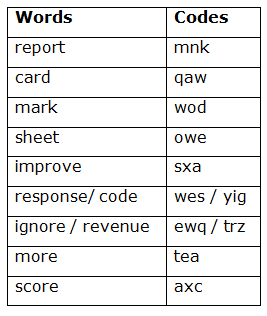
6). Answer: C
7). Answer: D
8). Answer: B
9). Answer: D
10). Answer: C
Direction (11-15):
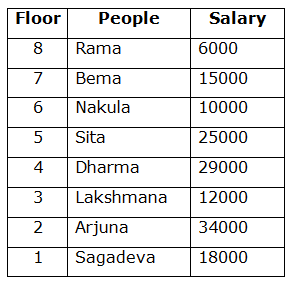
11). Answer: D
12). Answer: B
13). Answer: D
14). Answer: A
15). Answer: D
Direction (16-20)
16). Answer: E
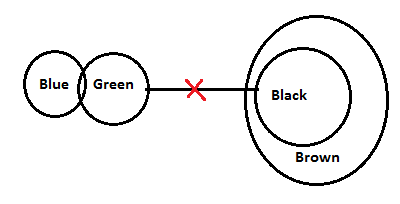
17). Answer: B

18). Answer: B
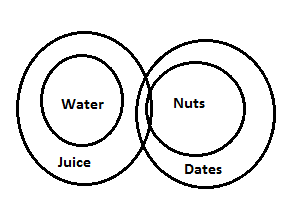
19). Answer: A
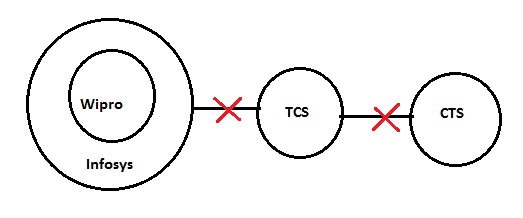
20). Answer: C
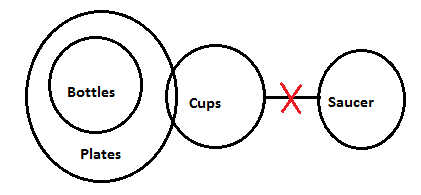
Direction (21-25):

21). Answer: B
22). Answer: B
23). Answer: C
24). Answer: D
25). Answer: A
Direction (26-30)
26). Answer: C
Explanation: N = R ≥ P < A > X ≤ L = W ≥ Q
X ≤ L = W –> X ≤ W (True)
27). Answer: B
Explanation: E ≥ R = P < M ≤ X ≥ O < A = Z
- E ≥ R = P < M ≤ X ≥ O (False)
- P < M ≤ X (True)
28). Answer: E
Explanation: N ≥ V < B ≤ U > D = I > Z ≥ X
- U > D = I > Z ≥ X (True)
- V < B ≤ U (True)
29). Answer: A
Explanation: M = C > V ≤ N > E ≥ P ≤ Z ≥ Q
- M = C > V (True)
- V ≤ N > E ≥ P (False)
30). Answer: E
Explanation: N > H = I ≥ E < P > X ≥ A < W
- N > H = I ≥ E (True)
- P > X ≥ A (True)
Direction (31-33):

31). Answer: D
32). Answer: A
33). Answer: B
Direction (34-35):
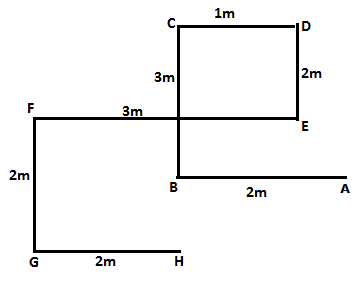
34). Answer: C
35). Answer: B





